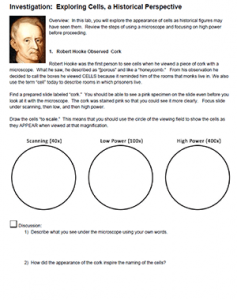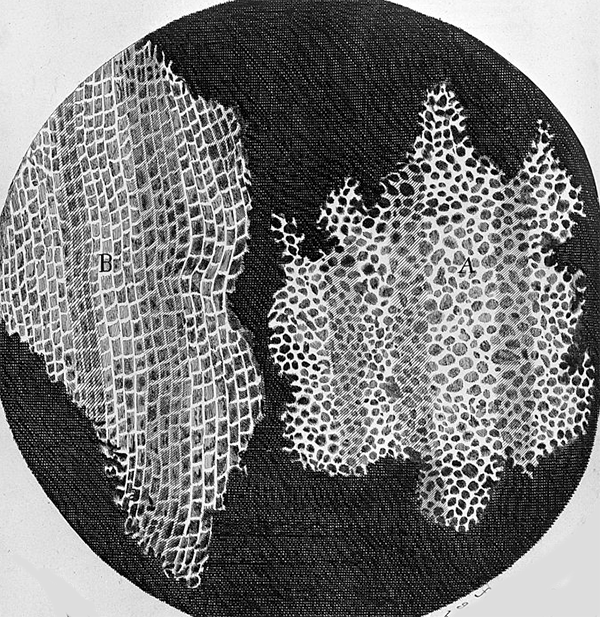
Many textbooks include a historical context of how the Cell Theory was created. Students learn that Robert Hooke was the first to see cells, Leeuwenhoek had his animalcules and Schwann and Schleiden contributed their observations that all animals and plants were made of cells. While biologists might find the history of the cell theory fascinating, I notice that many of my students seem to tune-out when you bring up the history of scientific discoveries.
In order to save time and improve engagement, I created this lab to include a short history of the cell theory as students explore prepared slides of cells. They start by looking at cork cells, just like Robert Hooke and see that the cells do look like tiny boxes.
Then they look at a prepared paramecium or a sample of pond water. This serves as a sample of what Leeuwenhoek saw when he coined the term “animalcule.”
Finally, students examine prepared slides of plant cells and animal cells to imagine how Schleiden and Schwann contributed to our current understanding of the Cell Theory.

I created this lab with instructions to view cells from specimens I already have. Prepared slides are surprisingly expensive! If you download a copy of the google drive file, you can adjust the slide names to whatever you have laying around your lab.
HS-LS1-2 Develop and use a model to illustrate the hierarchical organization of interacting systems that provide specific functions within multicellular organisms

